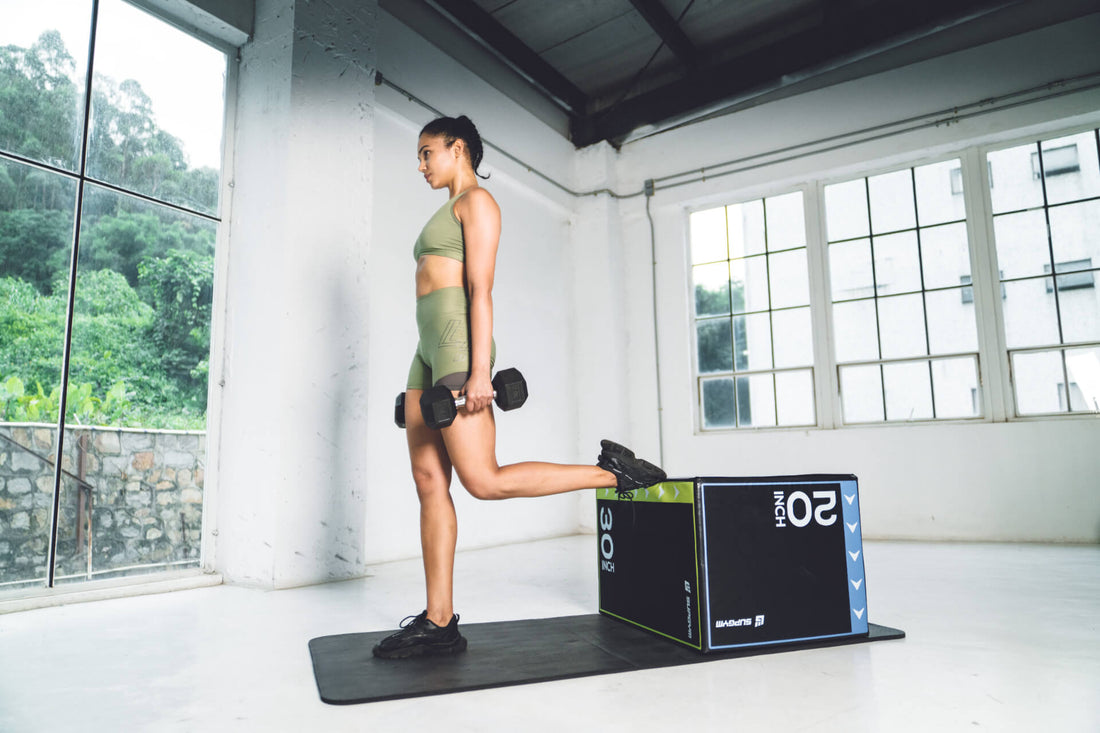
When it comes to the overhead press, fitness enthusiasts often find themselves pondering the question: overhead press dumbbell vs barbell, which one reigns supreme? The debate isn't as straightforward as one might think. Each modality, whether dumbbells or a barbell, brings its own set of benefits and drawbacks to the table. Let's dive deep into the specifics of each to help you make an informed decision for your training program.
The Overhead Press: A Powerful Compound Move
The overhead press, whether performed with dumbbells or a barbell, is a compound movement that recruits several muscle groups, including the deltoids, triceps, and the core for stabilization. Given its complexity, the choice between dumbbells and barbells can influence muscle engagement, stability, and even the risk of injury.

Barbell Overhead Press
The barbell overhead press is often the go-to for those aiming to lift heavier weights. This exercise enables a more centralized load, allowing lifters to press more weight compared to dumbbells.
Advantages
- Strength Gains: The unified nature of the barbell allows you to lift heavier weights, contributing to overall strength increases.
- Balance: The symmetrical load of the barbell helps in developing balance and coordination.
- Progressive Overload: It is easier to implement progressive overload by simply adding small weight increments to the bar.
Drawbacks
- Muscle Imbalance: A barbell can mask strength disparities between your left and right muscles.
- Range of Motion: The barbell restricts the natural movement of your shoulders, which could lead to injury over time.
- Equipment: Requires access to a barbell and weight plates, which may not always be accessible.
MAJOR FITNESS's barbell series provides versatility for a variety of exercises and is suitable for any exercise intensity. It is the preferred target for fitness people who are more focused on strength training. Learn more.

Dumbbell Overhead Press
On the flip side, the dumbbell overhead press offers a more individualized approach to lifting, allowing each arm to move independently. This can lead to several differing outcomes in terms of muscle engagement and overall fitness.
Advantages
- Muscle Symmetry: Dumbbells help in identifying and correcting muscle imbalances by working each side of the body independently.
- Range of Motion: Allows for a greater and more natural range of motion, reducing the risk of joint injuries.
- Core Activation: Requires greater core stabilization, contributing to a stronger midsection.
Drawbacks
- Weight Limitation: Most people can lift less with dumbbells than with a barbell, potentially limiting maximum strength gains.
- Learning Curve: Requires greater coordination and technique, which might be challenging for beginners.
- Equipment Accessibility: While dumbbells are generally more accessible than barbells, heavier dumbbells can be expensive and occupy more space.
Major Fitness' dumbbell collection offers a variety of options, from adjustable dumbbells to fixed weight sets, ensuring that everyone can find the dumbbell that's right for them. Discover the power of effective strength training to achieve specific fitness goals. Learn more.
Which One is Better: Overhead Press Dumbbell vs Barbell?
The choice between the two largely depends on your individual goals and specific circumstances. For those aiming to build maximum strength and muscle mass, the barbell overhead press might be more suitable. On the other hand, if you’re focused on correcting muscle imbalances and enhancing shoulder health, the dumbbell overhead press could be the better option.
So, should you choose one over the other?
Not necessarily. Incorporating both dumbbell and barbell presses into your workout routine can provide a well-rounded shoulder workout, addressing both strength and stability.
Program Recommendations
If you’re a newbie: Start with dumbbells to develop a stronger sense of balance and coordination, then gradually introduce barbell presses.
If you’re advanced: Alternate between barbell and dumbbell presses to keep your muscles guessing and to prevent plateaus.
Sample Workout
- Warm-Up: Shoulder stretches and light dumbbell raises
- Exercise 1: Barbell Overhead Press - 3 sets of 8-10 reps
- Exercise 2: Dumbbell Overhead Press - 3 sets of 10-12 reps
- Exercise 3: Lateral Raises - 3 sets of 12-15 reps
- Cool Down: Gentle stretching focusing on the shoulders
The question of overhead press dumbbell vs barbell doesn't have a one-size-fits-all answer. It boils down to your individual fitness goals, your level of experience, and your equipment availability. By understanding the unique benefits and drawbacks of each, you can craft a more effective and balanced workout routine. Remember, the key is variety and consistency in your training program.
Ultimately, whether you choose dumbbells, a barbell, or a combination of both, you're taking a significant step towards improving your shoulder strength and overall fitness. Embrace the journey and enjoy the gains!
















